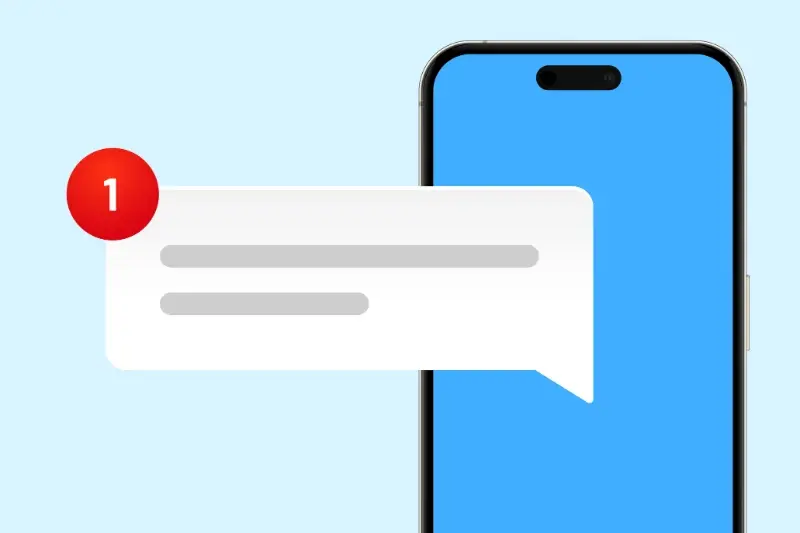App Analytics That Actually Matter: Beyond Vanity Metrics
Building a successful mobile app isn't just about creating something that looks good and works well—it's about understanding what your users actually do once they've downloaded it. After working with countless app projects over the years, I've noticed that most developers and business owners get completely obsessed with numbers that sound impressive but don't actually tell them much about their app's real performance. Downloads, followers, page views—these figures make you feel good at first, but they're not the ones paying your bills or keeping users engaged.
The problem is that these surface-level numbers are incredibly easy to track and share in meetings. They make great headlines too. "We hit 100,000 downloads!" sounds brilliant until you realise that 90% of those people used your app once and never came back. That's when the real questions start: are people actually using what you built? Are they finding value in it? Most importantly, is your app contributing to your business goals, or is it just another expensive experiment?
The most dangerous person in your company is the one who knows just enough about analytics to be confident but not enough to be accurate
This is where meaningful metrics and proper business intelligence come into play. Real app analytics dig deeper than vanity numbers to show you the patterns that matter—how people behave inside your mobile app, what drives them to stick around, and which features actually move the needle for your business. Getting this right means the difference between making decisions based on gut feelings and making them based on solid data that drives real growth.
What Are Vanity Metrics and Why They Fool Us
Vanity metrics are those numbers that make you feel brilliant about your app but don't actually tell you if it's working. They're the statistics that look impressive on paper—or in a presentation to your boss—but won't help you understand what's really happening with your users.
Think about total downloads. Sure, having 100,000 downloads sounds fantastic, but what if 90% of those people opened your app once and never came back? Or consider page views; your app might be getting thousands of them, but are people actually doing what you want them to do? These numbers can be misleading because they don't show the full picture.
Common Vanity Metrics That Trick Us
- Total app downloads
- Number of registered users
- Social media followers
- Page views or screen views
- Time spent in app (without context)
- Number of sessions
The problem with vanity metrics isn't that they're completely useless—they can show growth trends and help with marketing efforts. The real issue is when we rely on them to make important business decisions. They give us a false sense of security and can lead us down the wrong path.
Why We Fall for Them
We love vanity metrics because they make us feel good. Big numbers are exciting! They're easy to understand and simple to report. But here's the thing: they don't connect to your bottom line. A million downloads means nothing if nobody's buying your premium features or engaging with your content. What we really need are metrics that show whether people find value in what we've built and whether our app is actually solving their problems.
The Real Numbers That Show App Success
After years of building mobile apps for all kinds of businesses, I can tell you that most people focus on the wrong numbers. They get excited about downloads and daily active users—and whilst these aren't completely useless, they don't actually tell you if your app is succeeding or failing.
Real success metrics dig deeper into what users are doing inside your app and whether those actions are making you money. These meaningful metrics show the health of your business, not just how popular your app appears to be on the surface.
The Core Metrics That Matter
When I'm reviewing app performance with clients, we focus on these key areas. Each one tells us something different about how the app is performing:
- Monthly recurring revenue (MRR) for subscription apps
- Average revenue per user (ARPU) across all monetisation models
- User lifetime value (LTV) to understand long-term profitability
- Feature adoption rates to see what people actually use
- Conversion rates from free to paid users
- Customer acquisition cost (CAC) compared to LTV
Track your app's "aha moment"—the specific action that makes users stick around. This could be completing their first transaction, connecting with a friend, or finishing the onboarding process.
These numbers work together to paint a complete picture of your app's business intelligence. You might have fewer daily users than your competitor, but if your revenue per user is higher and people stick around longer, you're winning where it counts. The mobile app market is competitive enough without chasing metrics that don't pay the bills.
User Behaviour Metrics That Tell the Truth
Right, let's get into the metrics that actually show you what your users are doing—not just the numbers that make you feel good. These behaviour metrics reveal the real story of how people interact with your app, and trust me, they're far more valuable than knowing how many downloads you got.
Session Length and Quality
Session duration tells you how long people spend in your app each time they open it. But here's the thing—longer isn't always better. If you've built a quick utility app for checking train times, a 30-second session might be perfect. Users got what they needed and left happy. However, if you're running a social media or gaming app and sessions are consistently short, that's a red flag.
What matters more is session depth. Are users just opening your app and closing it immediately? Or are they actually engaging with different features? Track how many screens users visit per session and which actions they complete. This shows whether people are finding value or just bouncing around confused.
User Flow and Drop-off Points
User flow analysis shows you exactly where people get stuck or give up. You might discover that 70% of users drop off at your registration screen—that's telling you something important about your onboarding process. Or maybe they're abandoning their shopping cart at the payment stage; time to look at your checkout flow.
Heat mapping tools can show you where users tap most frequently and where they're trying to interact but nothing happens. These insights are gold for improving your user experience and keeping people engaged longer.
Revenue and Business Growth Indicators
Here's where things get serious—the meaningful metrics that show whether your mobile app is actually making money. I've worked with countless clients who obsess over download numbers but completely ignore the data that shows real business growth. That's like counting how many people walk past your shop window whilst ignoring how much they're spending inside.
Monthly recurring revenue (MRR) sits at the top of the list for subscription-based apps. This tells you exactly how much predictable income your app generates each month. Customer lifetime value (CLV) comes next—it shows the total revenue you can expect from a single user over their entire relationship with your app. When you know these numbers, you can make smart decisions about how much to spend acquiring new users.
The Numbers That Actually Pay the Bills
Average revenue per user (ARPU) gives you a clear picture of how much each person contributes to your bottom line. Some apps have thousands of users but terrible ARPU; others have fewer users who spend significantly more. The conversion rate from free to paid users matters just as much—this shows how well your app convinces people to open their wallets.
The best mobile apps don't just attract users; they turn those users into profitable customers who stick around
Churn rate tells you how fast you're losing paying customers, whilst the time to first purchase shows how quickly new users see enough value to buy something. These business intelligence metrics work together to paint a complete picture of your app's financial health. Without tracking them properly, you're flying blind in a competitive market where understanding your true performance can make or break your success.
Technical Performance Data Worth Tracking
Your app might be brilliant at converting users and generating revenue, but if it crashes every five minutes or takes forever to load, none of that matters. Technical performance metrics are the foundation that everything else sits on—ignore them at your peril.
The most telling metric is crash rate, which shows the percentage of app sessions that end unexpectedly. Anything above 1% should set alarm bells ringing. App load time is equally important; users expect your app to launch within three seconds, and every second beyond that costs you users. We also track API response times because slow backend calls create frustrating user experiences, even if your app itself runs smoothly.
Memory and Battery Performance
Modern smartphones are powerful, but users still notice when apps drain their battery or slow down their device. Memory usage monitoring helps identify memory leaks that cause apps to consume more RAM over time. Battery consumption tracking is particularly important for apps that run in the background—location-based apps and social media platforms need to be especially careful here.
Key Technical Metrics to Monitor
- Crash rate (should be under 1%)
- App launch time (target under 3 seconds)
- API response times
- Memory usage and leak detection
- Battery consumption rates
- Network error rates
- Frame rate for animations
The beauty of technical metrics is they're objective—there's no arguing with a crash log or a slow loading screen. They give you concrete problems to solve, and when you fix them, the improvement in user experience is immediate and measurable.
How to Set Up Proper Analytics Systems
Right, let's get practical. Setting up analytics for your mobile app isn't rocket science, but it does need some thought. The good news is that most of the heavy lifting gets done by the tools themselves—you just need to know what to track and how to set it up properly.
Start with the basics: Google Analytics 4 for mobile apps gives you a solid foundation without breaking the bank. Firebase Analytics works brilliantly for both iOS and Android, and it's free. For more advanced business intelligence, tools like Mixpanel or Amplitude offer deeper insights into user behaviour, though they come with a price tag once you scale up.
Getting Your Events Right
The key to meaningful metrics lies in proper event tracking. Don't just track everything—that leads to data overload. Focus on actions that matter to your business. User registration, feature usage, purchase attempts, and session depth are good starting points.
Set up custom events for your app's unique features right from day one. It's much harder to add tracking retrospectively than to build it in from the start.
Essential Setup Steps
Here's what you need to get analytics working properly:
- Install your chosen analytics SDK in both iOS and Android versions
- Set up conversion funnels for your key user journeys
- Create custom audiences based on user behaviour patterns
- Configure automated reports that get sent to stakeholders weekly
- Test your tracking thoroughly before launch—broken analytics are worse than no analytics
Remember to comply with privacy laws. Always ask for user consent where required and be transparent about what data you're collecting. Your users' trust matters more than any metric.
Using Data to Make Better App Decisions
Having all this data is one thing—actually using it to make smart decisions is another entirely. I've seen plenty of app teams collect mountains of analytics but then just let it sit there gathering digital dust. The real magic happens when you turn those numbers into actionable changes that improve your app.
Start by setting up regular review sessions. Weekly is good for most apps, but daily might be better if you're running campaigns or launching new features. Look at your key metrics and ask yourself: what's working well and what needs fixing? If your retention rate dropped last week, dig deeper. Was it a technical issue? Did users struggle with a new feature? The data will guide you to the answer.
Making Changes Based on What You Learn
When you spot problems in your data, resist the urge to make huge changes immediately. Small, measured adjustments work better—and they're easier to track too. If users are dropping off at your onboarding screen, try tweaking the copy first before redesigning the entire flow.
The best approach is to form hypotheses based on your data, then test them. Think your checkout process is too long? Test a shorter version with half your users and compare conversion rates. Your analytics will tell you if you're on the right track.
Building a Data-Driven Culture
Share your findings with everyone involved in your app—designers, developers, marketers, the lot. When your whole team understands what the numbers mean, they'll start making better decisions naturally. Data shouldn't live in a silo; it should inform every choice you make about your app's future.
Conclusion
After eight years of building mobile apps for all sorts of businesses, I've learnt that the difference between apps that succeed and those that don't often comes down to one thing—measuring what actually matters. The downloads, likes, and social shares might make you feel good, but they won't tell you whether your app is solving real problems for real people.
The meaningful metrics we've covered—retention rates, user lifetime value, conversion funnels, and technical performance data—these are the numbers that show whether your mobile app is truly working. They reveal how users behave, where they struggle, and most importantly, whether they find enough value to keep coming back. That's business intelligence you can actually use.
Setting up proper analytics isn't just about installing tracking code and hoping for the best. It requires thinking carefully about what questions you need answered, choosing the right tools for your specific situation, and—this bit's important—actually looking at the data regularly. I've seen too many apps with perfect analytics setups that nobody bothers to check.
The best part about focusing on meaningful metrics? They create a cycle of improvement. When you understand why users abandon your onboarding flow or which features drive the most engagement, you can make targeted changes that actually move the needle. Your app gets better, your users get more value, and your business grows. That's how you build something that lasts.
Share this
Subscribe To Our Blog
You May Also Like
These Related Stories

How To Build A Travel App That Actually Makes Money

The Complete Guide to App Monetisation: Finding Your Perfect Model





